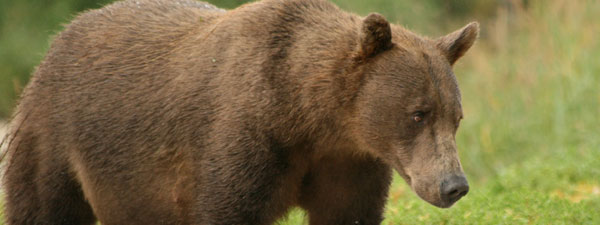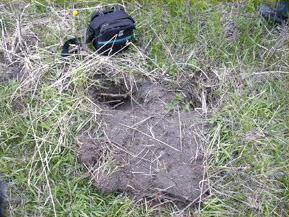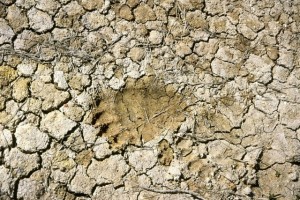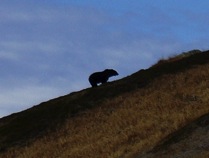[toc class=”toc-right”]

This page presents an assortment of grizzly bear observation accounts that have occurred in or near to Washington State’s North Cascade Ecosystem. We will keep this page updated as new accounts become available.
How Sightings are Rated – How Reliable are They?
As stated in the report titled the ‘North Cascades Grizzly Bear Ecosystem Evaluation’ [1], North Cascades grizzly bear observations are rated on a reliability scale from Class 1 to Class 4.
Class 1 (confirmed) reliability rating indicated a grizzly bear observation confirmed by a biologist and/or by photograph, carcass, track, hair, dig, or food cache. Grizzly bear sign required verification by a grizzly bear biologist. Tracks were documented by photograph and/or plaster cast and met grizzly bear front foot toe alignment criteria using the Palmisciano Line Method. If tracks were not of sufficient quality to allow the use of the Palmisciano Line Method, they were rated with a lower reliability. Hair samples were guard hairs identified by microscopic examination of basal and shaft scale patters in combination with shaft shield and shaft tip coloration. If structural characteristics of the hair could not be differentiated, the rating was lowered. Digs and food caches required verification by a grizzly bear biologist.
Class 2 (high reliability) report documented and observation of a grizzly bear that was identified by two or more physical characteristics, but lacked verification criteria as noted for a Class 1 observation. The presence of a shoulder hump, long front claws, and concave facial profile were the physical characteristics used to identify Class 2 observations.
Class 3 (low reliability) rating indicated that the observation report included documentation of only one identifying physical characteristic of a grizzly bear, making it impossible to verify the species of bear observed.
Class 4 (not a grizzly bear) rating was given to an observation that was reported as a grizzly bear, but which, upon investigation, was verified to be a species other than a grizzly bear.
Between 1983 and 1991, there were twenty Class 1 sightings, eighty-two Class 2 sightings, and 102 Class 3 sightings.
From 2003 thru 2008, there were 26 reported sightings. Of these, there were one Class 1 sighting, three Class 2 sightings, and one Class 3 sighting.
Recent North Cascades Observations
Of North Cascades grizzly bear sightings reported to government agencies between 1950 and 1991, 20 were confirmed and an additional 81 were considered highly probable. Today, the estimated resident population in Washington’s North Cascades is fewer than 20 bears — the estimated population in British Columbia’s North Cascades is also fewer than 20 bears. It is likely the home ranges of a few grizzly bears span the international border.
Upper Cascade River watershed, North Cascades, Washington State, October 2010
Photos taken by hiker Joe Sebille in October 2010 appeared to be that of a grizzly bear in Washington’s North Cascades. These were initially thought to be the first confirmed grizzly bear photos taken in the North Cascades in possibly a half-century. However, in 2015, additional photos surfaced taken by others in the same region and during the same general time period of the Sebille photos. These photos were less distant with better lighting and detail and appear to be this same bear — a large black bear with the prominent shoulder hump and other features which made it resemble a grizzly bear, especially in the distant profile as can be seen in the photo below. Read the full press release and see the photos.
Manning Provincial Park, British Columbia, 2010
Just 15 miles north of the border between Washington and Canada this photo (below) of a North Cascades Grizzly Bear was captured in Manning Provincial Park. This is just a mere 2 to 3 hour walk for the bear from Washington State, making it the closest confirmed sighting of a North Cascades Grizzly Bear in years.
Chesaw Grizzly Bear, May 2003
In May, 2003 a rancher witnessed a grizzly bear making its way across his property near Chesaw, Washington. Although this grizzly bear observation was outside the North Cascades Ecosystem, it was only 25 miles east of the North Cascades Grizzly Bear Recovery Zone.
Washington Department of Fish and Wildlife biologists documented by photo, measurement, and plaster cast, several bear tracks found in mud near a spring on the property. They also collected hair samples from a barbed wire fence through which the bear had reportedly passed, as well as bear scat (droppings) found near the tracks and hair. The biologists also found and photographed a small dig site (see below) where a large animal had excavated a ground squirrel burrow, a common foraging behavior for grizzlies, but not typical for black bears

British Columbia Grizzly Bear, 2002
In June 2002, two Canadian hunters came across a grizzly bear in the southern portion of British Columbia. The bear was grazing in a meadow east of Manning Provincial Park (which is directly adjacent to Washington’s North Cascades National Park Service Complex).
Glacier Peak, 1996
In 1996, a bear biologist saw a grizzly bear on the south side of Glacier Peak in the Glacier Peak Wilderness Area.
Thunder Creek, 1991
A photograph of a grizzly bear front track was taken in the Thunder Creek drainage (North Cascades National Park Service Complex) in 1991. This represents a Class 1 level observation, which means that it has been verified as evidence of a North Cascades grizzly bear. To learn more about identifying the difference between grizzly and black bear tracks, click here
Bacon Creek, Whatcom County, 1989
The grizzly bear track photograph below was taken on Bacon Peak (Whatcom County) in 1989. It shows the elongated claw marks on the front track (the lower of the two), and also the “shallow” toe arc that is typical of grizzly bears (and not black bears). To learn more about identifying the difference between grizzly and black bear tracks, click here.
[1] Almack et al. 1993





